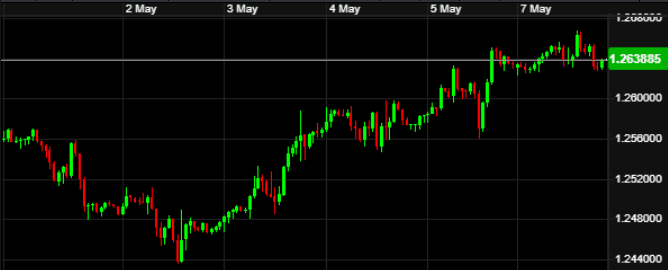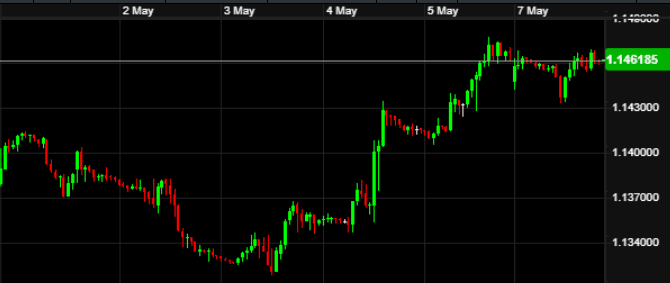ACM Update 09-05-23

Two very expected rate hikes from the ECB and Federal Reserve, but a surprise one from the Reserve Bank of Australia. Central banks are still at differing phases in their ongoing battle with inflation. Thursday’s Bank of England meeting is likely to show a further increase from Bailey & Co, whilst the US faces its latest battle with the debt ceiling.
Amidst a multitude of bank holidays, the majority of significant economic news came from the US last week. As widely forecast, the Federal Reserve hiked their base rate by 0.25% again, now running at 5.25%. The last time US interest rates were higher than they currently are…. January 2001.
The majority of Dollar movement came off the back of Chairman Powell’s press conference. He noted that the Fed feel they “are close, maybe even there” with regards to interest rates having reached their peak, but also commented that if the US were to have a recession, the Fed would hope it would be “mild”.
The Dollar weakened off into the weekend based on this slight change of narrative from recent meetings. Powell also discussed tighter bank regulation in the US, following the recent high-profile failures.
Non-Farm Payrolls closed out the week, coming in above the estimate for the 13th month in a row at 253k jobs added, versus the forecast 181k. We saw GBP-USD finish the week hitting an 11-month high, before edging a fraction higher during Monday trading. Unemployment also fell to 3.4%, matching the February low.
The chart below shows recent movements on GBP-USD, including Friday’s high:

Going into this week, we have the now almost regular position of the requirement to raise the US debt ceiling, for what would be the 79th time since 1960. Currently set at $31.4 trillion, expect some last-minute negotiations and potential Dollar volatility off the back of it.
Closer to home, Sterling-Euro hit its highest level since 20th December right at the end of last week, still having traded in an incredibly narrow range of 3% since the same date. Most of the movement in the pair was admittedly Eurozone-focussed, headlined by the ECB’s own interest rate hike of 25 basis points (again, widely expected).
President Lagarde’s subsequent press conference revealed no members were interested in holding rates, and some were even wanting a 50 basis point rise. The narrative demonstrated further rate hikes to come in subsequent meetings (probably 25bp in June & July), with a pause being ruled out for now.
Lagarde made reference to rising food inflation being of particular concern. This was backed up earlier in the week by Flash CPI Inflation data, which suggests Eurozone inflation will nudge higher this month to 7.0% from 6.9% the previous month. We also saw German Retail Sales make a sizeable drop in March of -2.4%. This marks the fourth monthly drop in a row for the Eurozone’s biggest player.
Please see below for recent movements on GBP-EUR:

In the UK, sandwiched between the two bank holidays there wasn’t a huge amount of data released. Mortgage approvals though hit their highest since November, with buyers seemingly regaining confidence again “post-Truss”. Manufacturing data also performed somewhat better than expected. One would think the influx of tourism due to the Coronation might well help UK GDP in Q2 a little… We live in hope!
Elsewhere, an unexpected rate hike from the Reserve Bank of Australia helped the AUD rebound somewhat last week. After a pause in their rate hike cycle last month, committee members decided inflation was still running too hot, despite opposing narrative in their last meeting. GBP-AUD rebounded by over 2%.
The week ahead:
Tuesday – Australian Retail Sales (02:30 UK time), Halifax House Price Index (07:00)
Wednesday – US CPI inflation exp 5.0% (13:30)
Thursday – Bank of England Rate Announcement (12:00), Gov Bailey speech (12:30), US PPI inflation (13:30)
Friday – UK GDP for March exp 0.0% (07:00), BoE’s Huw Pill speech (12:15)
Another short week, another with eyes on inflation and interest rates. The UK (& French) bank holiday on Monday means the majority of data is condensed into the remaining four days.
Wednesday sees the latest round of inflation data out of the US, which will be closely watched by Jerome Powell and his fellow policy members. The expectation is for numbers to match last month at 5.0%, not quite the sustained drop which would have been hoped for through recent rate hikes. As mentioned already, increasing food prices will not be helping.
The Bank of England’s latest policy announcement is going to be the major event, even though it feels like another 25 basis point rate hike is almost inevitable. Inflation still running at over 10% means Bailey and his colleagues need to take action, even if there are concerns from some corners that rates are already too high. The narrative of his post-event press conference is likely to be more important than the announcement itself.
US PPI (producer price index) inflation also follows later in the day.
The week closes out with UK GDP for March, forecast to be flat. However the recent retail sales release for the same month was lower than expected and blamed on the ever-reliable British weather. This may well have a knock-on effect on GDP. The Bank of England’s Chief Economist, Huw Pill, has a virtual speech at lunch time, as always his thoughts on current monetary policy will be eagerly listened for.
Do keep an eye on the US debt ceiling news. That has the potential for creating some sizeable moves for the Dollar if not swiftly resolved.
So, another short week but GBP-USD and GBP-EUR do seem to be moving into fresh new trading ranges thanks to the aforementioned releases in the US and Europe. Make sure to reach out to the team regarding any pending requirements. With upward movement in line with what we have seen recently, limit orders and forward contracts are popular products at present, to make the most of market moves. Please get in touch for more information if required.
Have a great week.